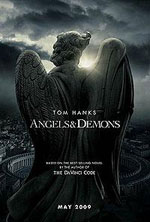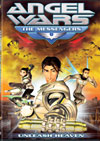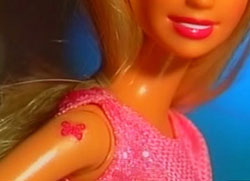 By Rebecca Cusey
By Rebecca Cusey
The mid-February sky shone bright and blue over the mountains of Switzerland when the creators of the upcoming movie “Angels & Demons”–the sequel to the film “The Da Vinci Code,” both based on the novels by Dan Brown– brought a gaggle of wide-eyed journalists to tour sites from the movie. Geneva is home to CERN., a real-life residential scientific community, and locale of a fictional murder that starts the action in the film.
CERN, which stands for European Council for Nuclear Research in French, hosts 7900 scientists from 80 countries, with the philosophy that discoveries are immediately shared openly with the world. Its main claim to fame is the supercollider, a tube that runs underground, 27 km in circumference, which accelerates electrons to just below the speed of light and then crashes them into each other. They then use huge, complicated cameras to try to capture and understand the pieces that go flying from the collision. As the scientists explained the process, using very small words and repeating themselves patiently, I fell in love with the idea that the most cutting edge science in the world isn’t so different than my 7-year-old son at playtime. Crash things into each other and see what they break into. Yeah. I can wrap my mind around that.
And yet, fascinating. They keep finding smaller and smaller pieces of the stuff the universe is made of. “The science that we’re after that we’re trying to describe is the most fundamental,” explained CERN antimatter physicist Tara Shears, “We’re trying to understand the universe. How it came into existence. How it evolved to the present state. We can recreate conditions back to a billionth of a second after the Big Bang. It’s a bit of a hubristic aim but it is the aim of science and physics to understand how everything works.”
In “Angels & Demons,” which stars Tom Hanks, the murder at CERN sets up a deep and irresolvable conflict between faith and science. However, the CERN physicists we spoke with do not perceive that conflict in their work. “As scientists, we deal in facts, and we can only get facts from experiments we can rerun and verify,” said Shears, “What goes on behind those experiments, when it comes to interpreting those results, what gave rise to them, why they look the way they did, we can’t say anything about that as a scientist. We can’t test it. And if we can’t test it, it’s hypothesis, it’s conjecture, it’s faith. So there is a boundary where science stops and faith and religion, if you like, take over in a regime where science can never tell you anything. So there’s not conflict, there really isn’t.”
Sergio Bertolucci, CERN head of research, added, “Physicists are more aware maybe of what we don’t know about the universe than biologists are. A child asks you many questions you can’t answer. Well, you say everything is made of electrons, ok, but where did they come from? How did they evolve and what was at the very beginning and what was before the beginning, and why are the laws of nature what they are? And when you look at these questions, you have to admit that before a certain time span that we can observe, there is something which we have to admit we do not know. And if you ask why is the universe there, we have absolutely no answer. We cannot answer questions like that. We cannot answer why.”
As the journalists took off our hard hats and emerged from the underground chamber that houses the supercollider, we saw again the ageless mountains, including Mont Blanc, that frame the bright sky. At CERN, at least, the scientists and the priests seem to be chasing the same mysteries.



